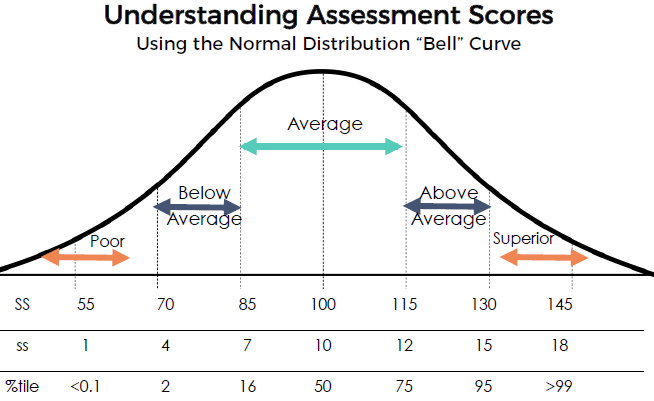What's the Deal with All This School Testing?
So often parents ask us the purpose of all the testing that is going on at school. It may seem like the academic calendar is based on preparing for the tests and then preparing for the results of the tests to come in, and just anxiety all around for students and teachers. So we wanted to take a moment to talk about the different types of testing that may be going on and the purpose of each different type of testing.
Typically we have two main categories that tests fall into:
Curriculum-Based Assessments & Norm-Referenced Assessments
The purpose of each of these types of assessments and the results that they provide can be very different. They both have a purpose, but it's important for parents to understand the difference.
Curriculum-Based Assessments
These assessments are designed to determine whether students are making progress toward specific curriculum targets that are meant to be mastered at each grade level. Oftentimes, the acronym CBM (Curriculum-Based Measurement) is used. These types of assessments are most frequently used to monitor a student's growth and progress. For example, the test will be provided in the fall and in the spring so you can see how much growth your student has made.
Typically, these assessments are good at telling whether or not progress has been made but they are not good at determining whether or not your child is "closing the gap" if any gaps exist academically.
These measures are designed to determine whether specific common core curriculum objectives are being met. These tests determine if students are learning new material.
They are not useful in determining whether or not a specific learning disability exists and do not typically provide nationally normed standardized data.
Specific assessments that are curriculum-based include: MAPS, i-Ready, Star Testing, CMAS, PARCC (the list goes on and on and is constantly changing!) These are more than likely the tests that are filling up your child's academic calendar.
Norm-Referenced Assessments
These assessments are designed to place students on a bell curve of performance in which some students perform poorly, some students perform in the average range, and some students perform very well. The bell curve is represented by the statistical curve typically with Standard Scores with an average of 100 or scaled scores with an average of 10. There are a number of other statistical measures as well but these are the most common.
Norm-referenced assessments help you to understand where your child is falling in comparison to nationwide norms.
In essence, where is your child falling in comparison to other students. These are the tests that need to be provided to determine if age or grade-based difficulties exist.
Norm-referenced tests are required to determine whether a learning disability is impacting your child.
We expect that all students will make academic growth. If your child is going to school daily, it is expected that they will learn new skills and materials - however, by utilizing norm-referenced tests you can better understand whether your child is learning at a slower rate than his or her peers, and if a true gap of performance exists.
Here at Ascend Learning & Educational Consulting, we use norm-referenced tests to diagnose specific learning disabilities. These are not the same tests that are being provided at school. If your child is struggling in school, you will want to request that the school provide norm-referenced assessments, not curriculum-based measures, to determine whether or not he or she needs additional support through the school.
Specific assessments that are norm-referenced include Wechsler Individual Achievement Test (WIAT-4), Woodcock-Johnson Test of Achievement (WJ-4), Clinical Evaluation of Language Fundamentals (CELF-5), Gray Oral Reading Test (GORT-5), Comprehensive Test of Phonological Processing (CTOPP-2), the list goes on and on but these would be the types of tests you would want to look for in order to better understand your child's performance in comparison to peers which helps identify if additional supports need to be put into place.
So the bottom line is...
A lot of assessment does occur during the school year, but it's not all created equally and it's used for different purposes. While it feels like your child may be receiving nonstop assessment, make sure not to turn down extra norm-referenced assessment which could lead to additional support for your child.
Keep in mind that testing that is done to qualify your child for an IEP or to obtain a diagnosis is not related to ALL the testing your child is prepped for in the classroom.
Be sure to check back for next week’s blog - How to Use Language and Reading Evaluation Data to Provide Better Instruction!


